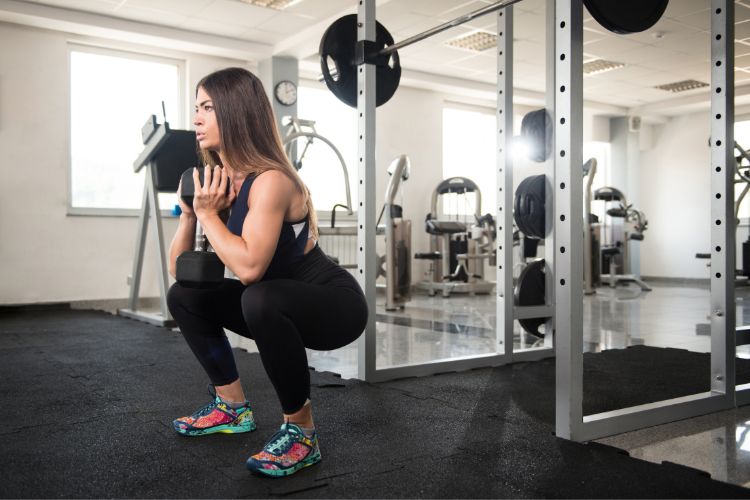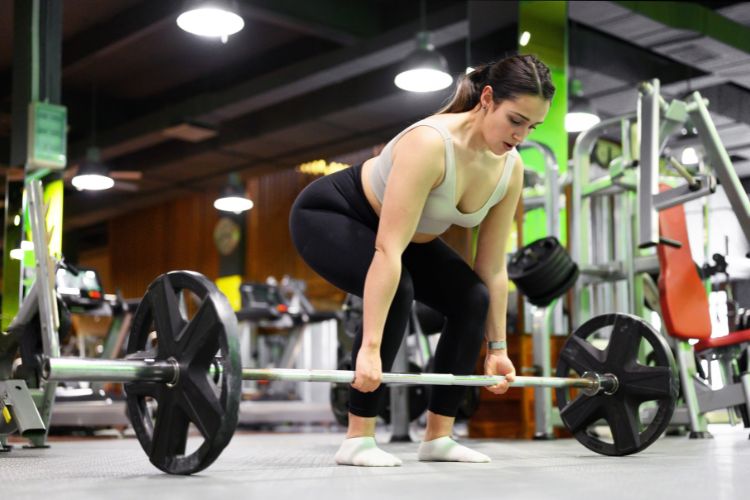Sign up for workout ideas, training advice, reviews of the latest gear and more.






Strength training is an essential component of any fitness regimen, especially for women who are looking to build muscle, increase strength, and improve overall health. One of the most effective methods for achieving these goals is through progressive overload. This training principle involves gradually increasing the demands on your muscles over time, forcing them to adapt and grow stronger. In this blog post, we’ll dive deep into what progressive overload strength training is, why it’s important, and how women can incorporate it into their strength training workouts for optimal results.
Progressive overload is a fundamental concept in strength training that involves gradually increasing the intensity, volume, or difficulty of your workouts over time. The idea is to challenge your muscles beyond their current capacity, which forces them to adapt and grow stronger. This principle applies to all fitness levels, whether you’re a beginner or an advanced lifter.
For women, progressive overload is particularly important because it helps break through plateaus, build lean muscle mass, and boost metabolism. Unlike steady-state cardio or static workouts, progressive overload ensures continuous progress, making it a cornerstone of effective strength training.
Many women shy away from strength training due to the misconception that it will make them “bulky.” However, progressive overload helps build lean muscle mass, which not only enhances your physique but also increases your metabolic rate. This means you’ll burn more calories even at rest.
Strength training with progressive overload is one of the best ways to improve bone density, which is crucial for women as they age. Weight-bearing exercises stimulate bone growth, reducing the risk of osteoporosis and fractures.
Progressively challenging yourself in the gym translates to increased confidence and mental resilience. Seeing tangible improvements in your strength and endurance can be incredibly empowering.
Progressive overload helps you build functional strength, making everyday activities like carrying groceries, lifting children, or climbing stairs easier and safer.
Implementing progressive overload doesn’t mean you have to lift heavier weights every single session. There are several ways to apply this principle, and the key is to find what works best for your body and fitness level. Below are some effective strategies:
The most straightforward way to apply progressive overload is by increasing the amount of weight you lift. For example, if you’re currently squatting 50 pounds, aim to increase to 55 or 60 pounds over time. Make sure to maintain proper form to avoid injury.
Another way to progress is by adding more repetitions or sets to your exercises. If you’re performing 3 sets of 10 reps, try increasing to 4 sets of 10 reps or 3 sets of 12 reps.
Shortening your rest periods between sets increases the intensity of your workout, challenging your muscles and cardiovascular system. For example, if you typically rest for 60 seconds between sets, try reducing it to 45 seconds.
Techniques like drop sets, supersets, and tempo training can add variety and intensity to your workouts. These methods keep your muscles guessing and prevent plateaus.
Eccentric (or negative) movements involve slowing down the lowering phase of an exercise. For example, taking 3-4 seconds to lower yourself during a squat. This increases time under tension, leading to greater muscle growth.
Here’s a 4-week progressive overload workout plan designed specifically for women. This plan focuses on compound movements that target multiple muscle groups, ensuring maximum efficiency and results.
Keep a workout journal or use a fitness app to log your weights, reps, and sets. Tracking your progress helps you stay consistent and motivated.
Progressive overload places stress on your muscles, so adequate recovery is essential. Ensure you’re getting enough sleep, eating a balanced diet, and incorporating rest days into your routine.
While it’s important to challenge yourself, avoid pushing to the point of pain or injury. If something doesn’t feel right, adjust your form or reduce the weight.
Consistency is key to seeing results. Stick to your plan and make gradual adjustments over time.
If you’re new to strength training or unsure how to implement progressive overload, consider working with a certified personal trainer. They can create a customized plan tailored to your goals and fitness level.
Failing to warm up properly increases the risk of injury. Spend 5-10 minutes on dynamic stretches or light cardio before starting your workout.
Sacrificing form for heavier weights can lead to injuries. Always prioritize proper technique over lifting heavier.
While progressive overload is effective, overtraining can lead to burnout and injury. Ensure you’re giving your body enough time to recover.
Strength training requires proper nutrition to fuel your workouts and support muscle recovery. Focus on a diet rich in protein, healthy fats, and complex carbs.
Nutrition plays a critical role in supporting your strength training efforts. Here are some key dietary considerations:
Protein is essential for muscle repair and growth. Aim for 1.2-1.7 grams of protein per kilogram of body weight daily. Good sources include lean meats, fish, eggs, dairy, and plant-based options like beans and lentils.
Carbs are your body’s primary energy source. Include complex carbs like whole grains, fruits, and vegetables in your diet to fuel your workouts.
Healthy fats support hormone production and overall health. Incorporate sources like avocados, nuts, seeds, and olive oil into your meals.
Staying hydrated is crucial for performance and recovery. Aim to drink at least 2-3 liters of water daily, more if you’re sweating heavily during workouts.
Progressive overload is a powerful tool for women looking to transform their bodies and improve their overall fitness. By gradually increasing the demands on your muscles, you can build strength, boost metabolism, and achieve your fitness goals. Remember to stay consistent, prioritize recovery, and listen to your body throughout the process.
Whether you’re a beginner or an experienced lifter, incorporating progressive overload into your strength training routine can take your workouts to the next level. So grab those weights, challenge yourself, and watch as you become stronger, fitter, and more confident with every session!
By following this guide, you’ll be well on your way to mastering progressive overload and reaping the countless benefits of strength training. Happy lifting!
Stay up to date on the latest women’s health, fitness and lifestyle trends and tips.